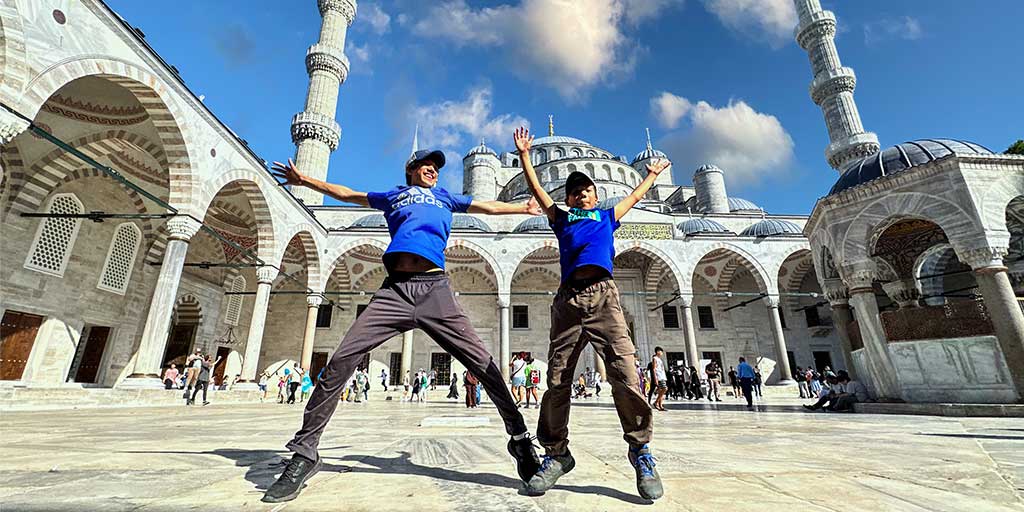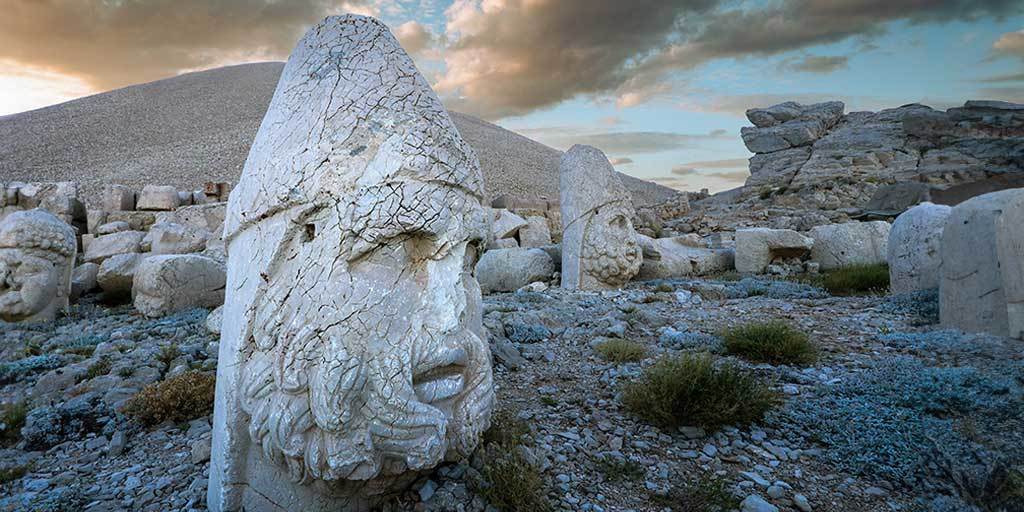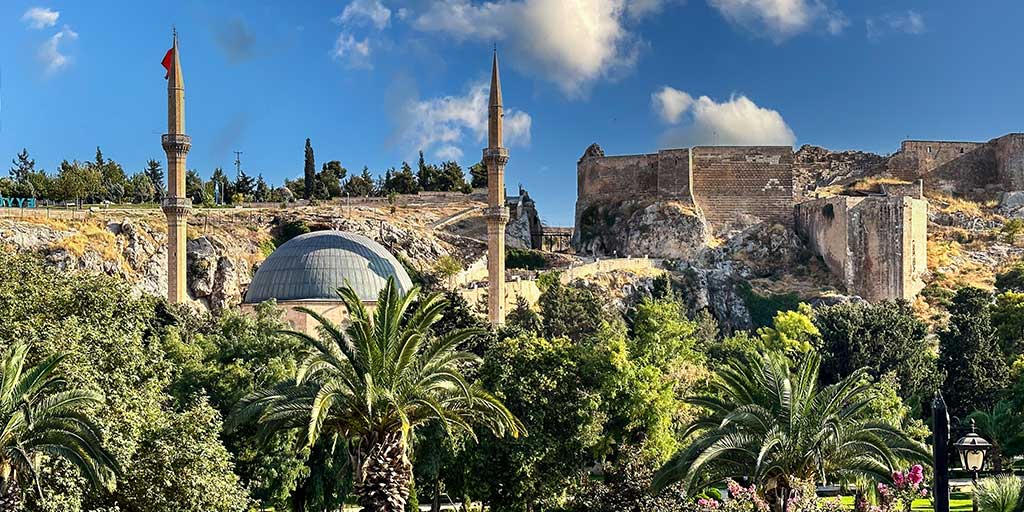Discover the ancient marvel of Göbekli Tepe, the world’s oldest man-made structure! Uncover the mysteries of this archaeological wonder and plan your journey back in time with our tips and tricks from real-world experience. From its enigmatic origins to practical travel tips, embark on an unforgettable adventure to this prehistoric masterpiece. Unearth the secrets of Göbekli Tepe and immerse yourself in history like never before.
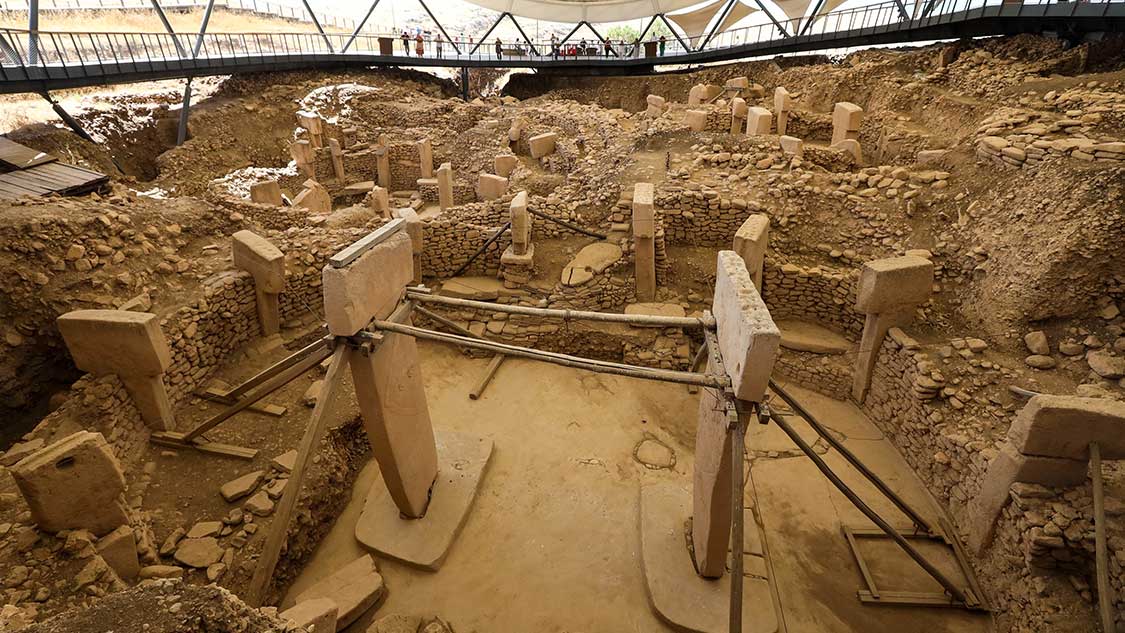
As my family gazed down into the deep pit, it was hard to fathom the extreme history that stood at its base.
Jutting up from the brown dirt are a series of oval walls sprinkled with towering, 18-foot tall stones, each weighing 8-10 metric tons and decorated with carvings of animals and human figures. These intricate and beautiful stones may not be the most majestic of all of the ancient ruins in Turkiye. But what separates the ruins of Gobekli Tepe from some of the world’s most famous ancient sites isn’t beauty.
It’s age.
You see, Gobekli Tepe isn’t just the most fascinating temple in Turkiye. It’s the oldest temple in the world.
In fact, at an estimated age of 11,600 years, Gobekli Tepe is the oldest man-made structure ever found.
Gobekli Tepe is so old that the first evidence of its monumental construction is just about the same time that humans first discovered agriculture. To think that these towering stones were mounted, carved, and put on displays at about the first time that the first fig trees were planted is mind-blowing. And that’s why we’ve listed it as one of the best places to visit in Turkiye.
As my family explored the remains of this fascinating structure, it was hard not to be overwhelmed by he sheer weight of the history of Gobekli Tepe. A visit here was the very reason that we left the wonders of Cappadocia to travel to the southeast corner of Turkiye, just 34 miles from the Syrian border.
And it was worth it.
The History Of Gobekli Tepe
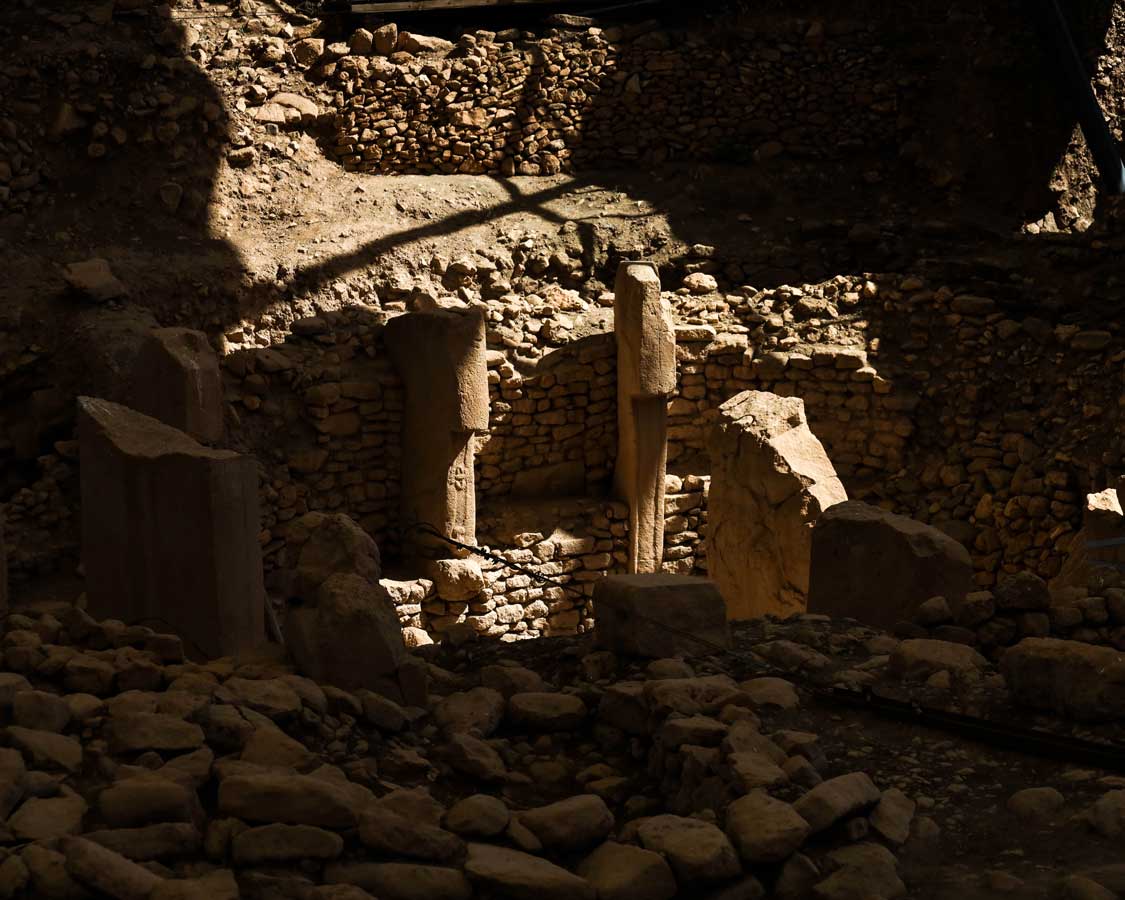
It was the spring of 1986 when a farmer, Şafak Yıldız, set to plow his fields for the summer harvest.
Over the past few years, Yildiz had become frustrated with parts of his field. Large stones jutted from some areas, making for obstacles that he needed to plow around. He had tried digging these stones out, but they seemed to go too deep. Instead, he got to work trying to file them down so they wouldn’t damage his plows.
This year, though, something else caught his attention. Yildiz found an ugly statue, a very phallic one, which he brought home to his family. His wife told him under no circumstances was this hideous thing to remain in their family home.
Six years later, the statue was uncovered by Klaus Schmidt, a German archaeologist. Thinking that there may be something more to this ugly sculpture, he had the item carbon-dated. The results shocked him and the world of archaeology.
The results came back with a date of around 12,000 years.
After some negotiation with Yildiz and the nearby villagers, Schmidt received permission to excavate an area that appeared to be a man-made mound, uncovering small stones with little historical significance. But then, Yildiz shows Schmidt an area of the property where he had struggled with some large stones that hindered his harvest.
The area was excavated, and what they unearthed completely rewrote the world’s understanding of human history. It was the oldest structure ever found to be built by humans, and it was far more grand and impressive than anyone had ever expected.
This massive temple structure was intricately carved, and the engineering behind setting these huge stones would have been far more advanced than anything believed possible at the time. After all, Gobekli Tepe is more than 6,000 years older than the Great Pyramids of Giza and 5,500 years older than the first monuments at Stonehenge.
Our Experience At Gobekli Tepe
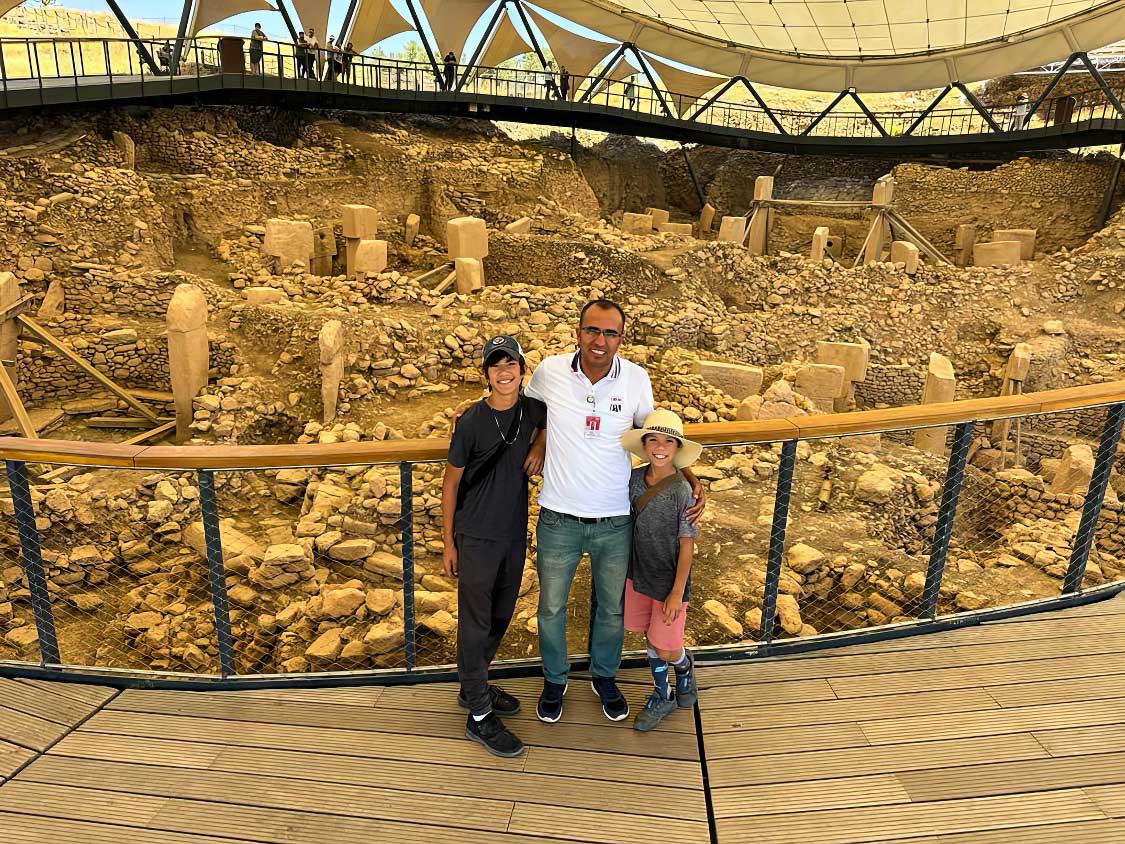
The previous day had been a long one. My family had arrived in Nemrut via a flight from Cappadocia late at night and then woke up early the next morning to summit the historic and beautiful Mount Nemrut for sunrise. The rest of our day was spent exploring these sites between Mount Nemrut and the city of Sanliurfa, where we spent the night.
We spent the night at Sehrazat Konagi hotel in Sanliurfa and were picked up by our Tours by Locals guide Taho, who is one of Turkiye’s foremost experts on Gobekli Tepe. If you are looking for an amazing guide, I highly recommend hiring him.
Taho early in the morning for a big day of exploring the top things to do in Sanliurfa and the surrounding area. Our first stop was the main reason for heading out to the far east of Turkiye, a visit to the world’s oldest man-made structure, Gobekli Tepe.
The drive from Sanliurfa to Gobekli Tepe took about 25-minutes. Before we knew it, we were pulling up the long drive to the parking lot. Taho hopped out to pick up our tickets and we all made use of the facilities before exploring the ruins.
The Gobekli Tepe site is not a massive city like Ephesus or even a small town like the ruins of Kayakoy near Fethiye. Everything is located within the bounds of a small hill that juts out from the surrounding landscape.
My youngest son, Dylan, pointed out as we walked up toward the shuttle bus, “You can see everything from here.” Gobekli Tepe really was built in a perfect location for both safety and inspiration.
We strolled up to the Dome and were immediately blown away by the sheer size of the massive pillars. To think that humans had the ingenuity to carve and erect stones as large as this nearly 12,000 years ago is astounding.
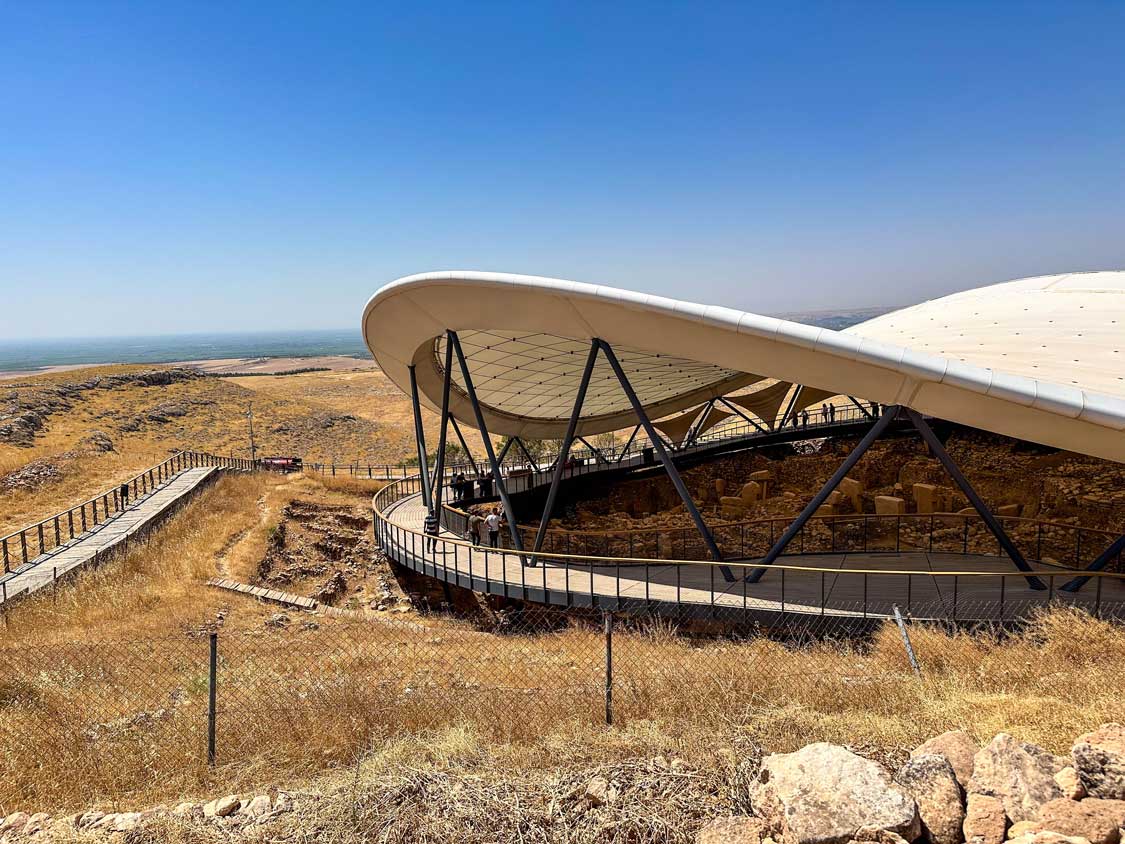
We were so gobsmacked by the size of the site that it took a few moments for us to notice the intricate carvings found throughout the Gobekli Tepe ruins.
Taho was able to expertly point out some of the sites most astounding features such as the three-dimensional carving on a pillar in Building C as well as some of the assumed meanings of the animals and symbols chosen in the pillars.
When we reached Building C, Taho also was able to point out the first clear evidence that the pillars were actually intended to represent figures with unmistakeable blets and hands resting on their bellies.
After we had toured all of the building of Gobekli Tepe, Taho had another surprise in store for us at the Gobekli Tepe gift shop.
Şafak Yıldız, the farmer who unearthed the statue that led to the remarkable discovery of Gobekli Tepe, died a few years back, not long after his property unveiled one of the world’s most astounding archaeology sites. But part of the agreement to allow the work to be done was for his family to be taken care of.
His grandson, Ridvan, mans the Gobekli Tepe gift shop. We were able to meet with him and learn a little about his experiences at the site as well.
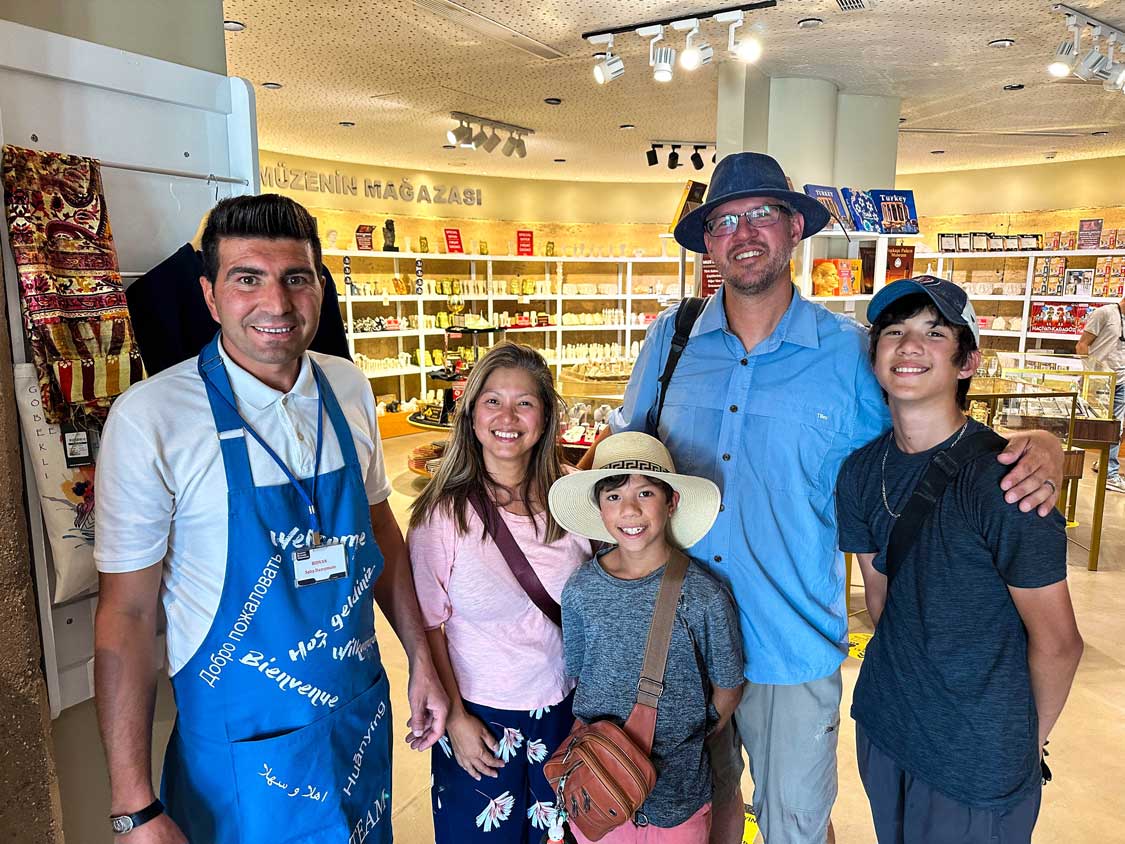
After our visit to Gobekli Tepe, we spent the rest of the day checking out some of the attractions in the area, including one of the world’s oldest universities, The Harran University, which was launched in the 12th century along with the historic 12th-century mud houses of Harran.
We also made our way into the city of Sanliurfa itself to explore the sacred fish of Abraham’s Pond and the cave that’s believed to be the birthplace of the Muslim and Christian prophet Abraham.
We also made a stop at the Gümrük Hanı market, one of the city’s best shopping areas, where we picked up a few souvenirs to bring home and enjoyed a regional favorite, pistachio hot chocolate.
Our Southeast Turkey Travel Video
Interested in exploring more about travel in Sanliurfa and the rest of Southeast Turkey? Check out our YouTube video that shares our experiences through Mount Nemrut, Arsameia, Severan Bridge, Sanliurfa, Gobekli Tepe, and Harran.
Tips For Visiting Gobekli Tepe
Until a few years ago, Gobekli Tepe was not well known. However, when it was declared a UNESCO World Heritage Site in 2019, its popularity exploded.
The site itself is pretty sparse. There’s a gift shop and cafe near the Gobekli Tepe parking lot and a covered waiting area where shuttles take visitors up the hill to the main archaeological site.
At the base of the main area is another small cafe and gift shop, along with modern toilets.
Beyond that, the entire Gobekli Tepe site is essentially just covered ruins with walkways connecting them. An ideal reflection of the ancient culture that created these incredible ruins.
The entire Gobekli Tepe archaeological site is connected by a series of accessible walkways. It can be visited by those with mobility devices as there are ramps throughout.
Here are a few tips to help you plan your visit to Gobekli Tepe:
- Tickets – Tickets can be obtained at the entrance to Gobekli Tepe. It may be one of the most important archaeological sites in the world, but it’s nowhere near as famous as places like Ephesus and the Blue Mosque in Istanbul, so you don’t need to book ahead.
- Clothing – Wear comfortable and weather-appropriate clothing to Gobekli Tepe. Remember that the temperature here can vary throughout the year. There is not much shade either. Apart from the gift shop and cafe, the entire archaeological site is outdoors. Pack a good sunhat and comfortable shoes, and don’t forget sunscreen.
- Respect the Archaeological Site: Gobekli Tepe is one of the oldest known examples of monumental architecture, dating back to around 9600 BCE. Show respect for this ancient site by following all rules and guidelines set by the authorities. Avoid touching the ancient stones or any carvings, and stay on designated paths to help preserve the archaeological integrity of the site for future generations.
- Book a Guided Tour: Consider joining a guided tour led by knowledgeable professionals who can provide valuable insights into the history, architecture, and significance of Gobekli Tepe. Guides can enhance your understanding of the site’s cultural and historical context, making the visit more educational and enjoyable. I highly recommend booking Taho from Tours by Locals. He was a wealth of information and a wonderful human being.
- Stay Hydrated: Apart from the main dig sites, there’s not much shade at Gobekli Tepe. The sun can be intense, especially during the summer months, so staying hydrated is crucial. Pack a filtered water bottle so that you’ll have access to clean water wherever you are. It’s an important way to stay healthy while traveling.
What To See At Gobekli Tepe
Gobekli Tepe is setup in a series of buildingsor dig sites that have been essential to uncovering the mysteries of this ancient site. There are well-maintained walking paths connecting each of these buildings.
All of the buildings are open air, but some of the more historically important sites are protected by fabric covers that can help reduce the effects of the elements.
The entire Gobekli Tepe site is actually quite compact. In fact, Buildings A through D are all located right next to each other and are protected under a covered platform dubbed “the dome.” Access to the buildings themselves are restricted, but visitors can see everything from a series of elevated walkways that encircle them.
Building E
Building E is the first landmark that most visitors will see when exploring Gobekli Tepe. This open-air dig site once featured pillars and walls, similar to some of the other temple sites located throughout the ruins. While evidence of them remains, the actual stones have disappeared.
You’ll be able to see the pedestals which held the dig sites to the tallest pillars. While the main stones are no longer here, building E offers one of the best views of the smooth cut marks left in the rocks by the builders showing that they had the ability to not just carve, but polish these huge stones.
Building A
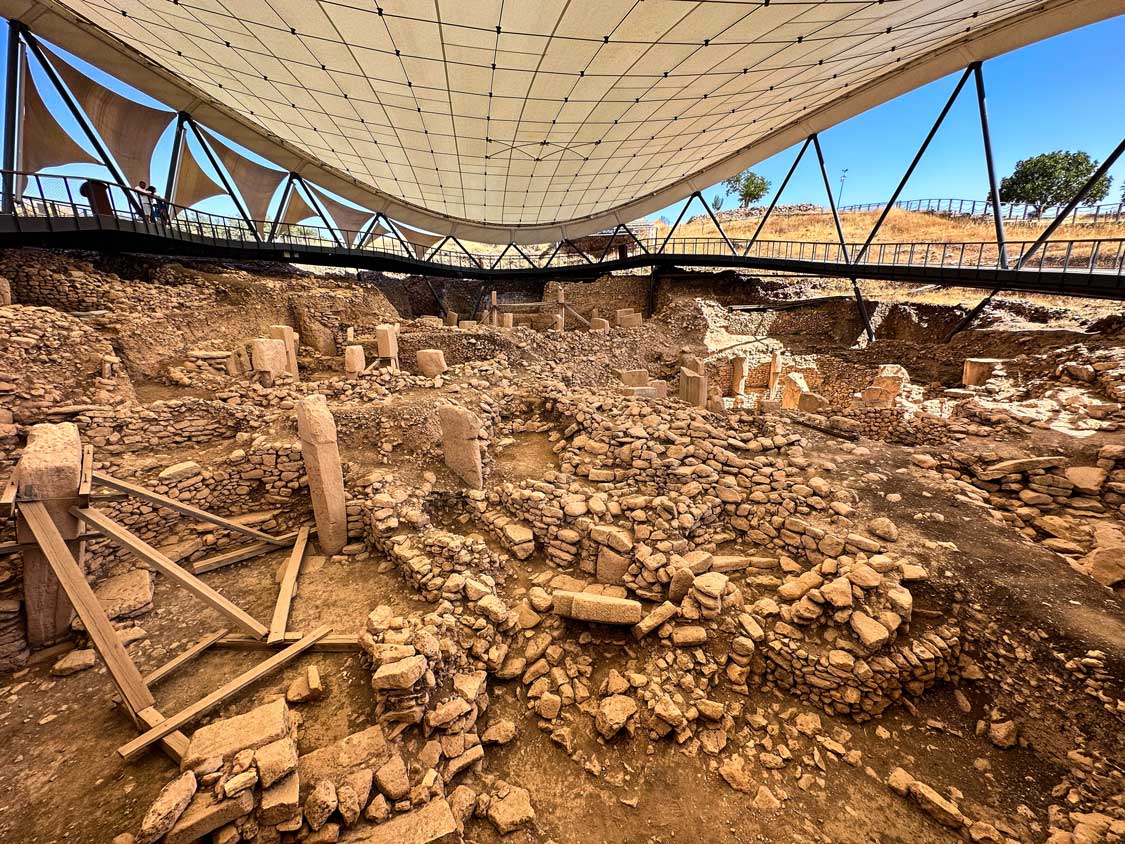
As you enter the covered area dubbed “the dome,” the first dig site that you’ll encounter is Building A or “the Snake Pillar Building.” This was among the very first sites at Gobekli Tepe to be excavated. It’s also one of the largest.
Building A contains five of Gobekli Tepe’s famous T-Pillars along with a collection of pillars spaced out along the inner walls. The entire building measures about 39 feet by 42.5 feet in an oval shape. On the largest of the two central pillars you’ll see the unmistakeable carving of a serpent along with groups of snakes forming mesh-like pattern.
The other central pillar shows some extensive damage to the top. This is where farmer Şafak Yıldız attempted to carve away the rock that was interrupting his cultivation. On this pillar is a carving of a, now extinct, form of cattle called an Auroch. Look closely and you’ll also find a fox and a bird.
Building B
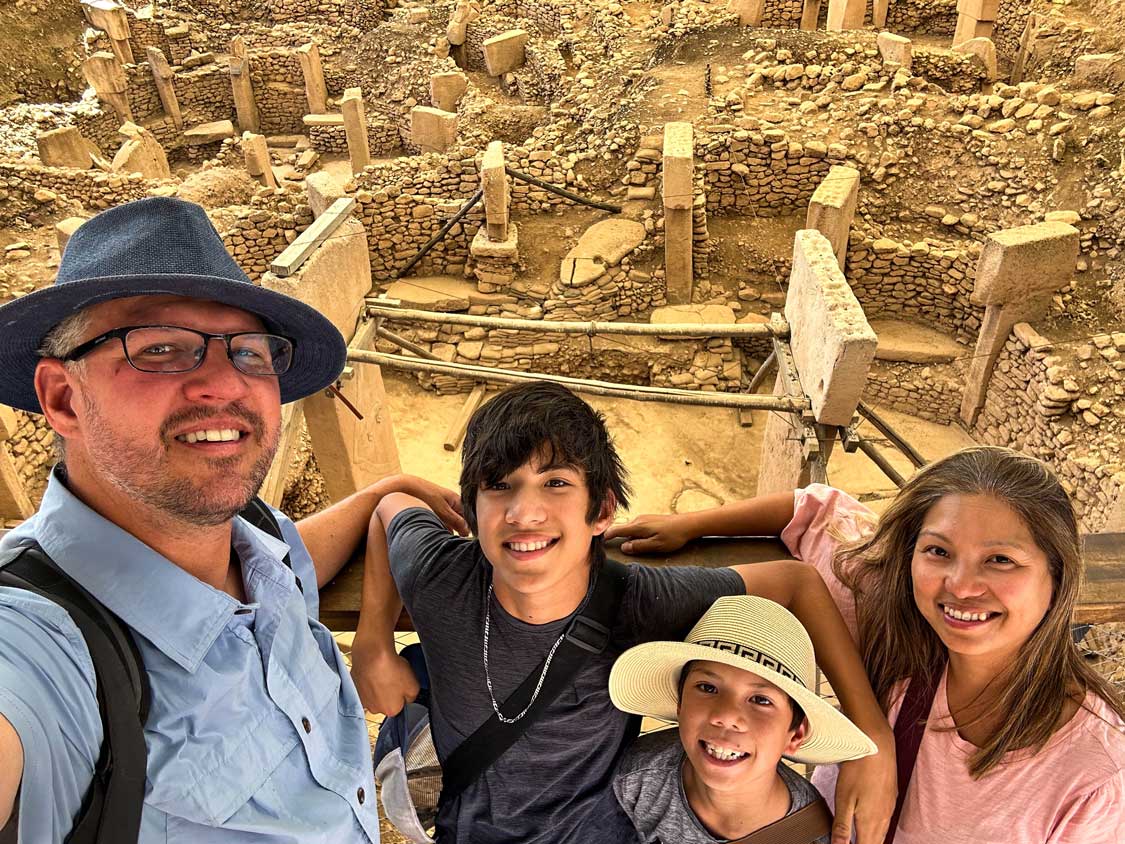
Building B was excavated in 1998 and is one of the most fascinating of all of the dig sites within Gobekli Tepe. The site contains 11 pillars placed atop a terrazzo floor. This type of floor was made with a plaster created by mixing burnt limestone with water in order to create flat, even floors.
At the center of building B are two central pillars. One with the unmistakable relief of a fox with a bushy tail.
Directly between the two central pillars is a hole in the surrounding walls topped with the head of a bull with two foxes or wolves looking up at it.
Building C
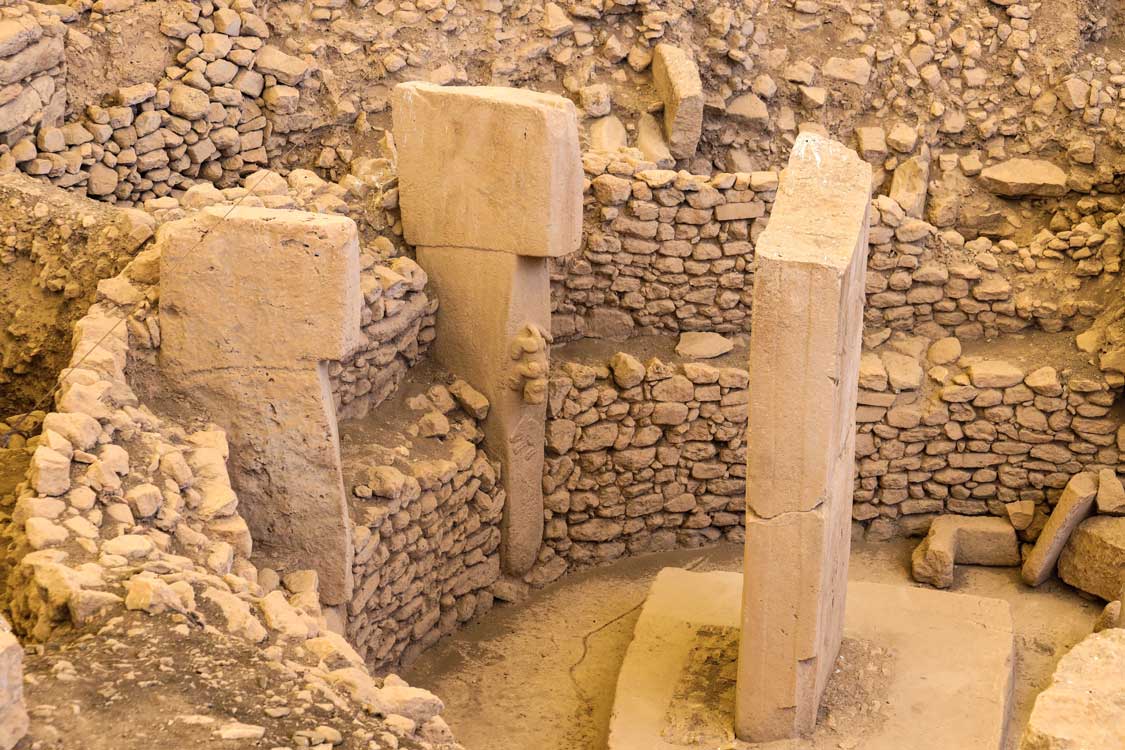
Directly opposite building B is building C. This is one of the largest dig sites in Gobekli Tepe and has two different layers to its surrounding walls. In the center are two large T-pillars, while the surrounding walls have nine, although it’s believed that the original structure contained several more.
One of the unique aspects of building C is that the pedestals holding the two central pillars were dug directly out of the bedrock rather than being carved from individual stones. Unfortunately, both of the central pillars are damaged, but you can still see the reliefs of foxes carved into them.
Between the two pillars, archaeologists found a sculpture of a boar. The sculpture is now on display at the Sanliurfa Museum.
Another fascinating aspect of building C is that one of the intact T-pillars on the outer ring is topped with a carving of five flightless birds standing above a wild boar.
If you look closely at the central ring, look for the three-dimensional figure of an animal on the side of one of the pillars. It’s pretty amazing that this detailed carving has survived for so many thousands of years.
Building D
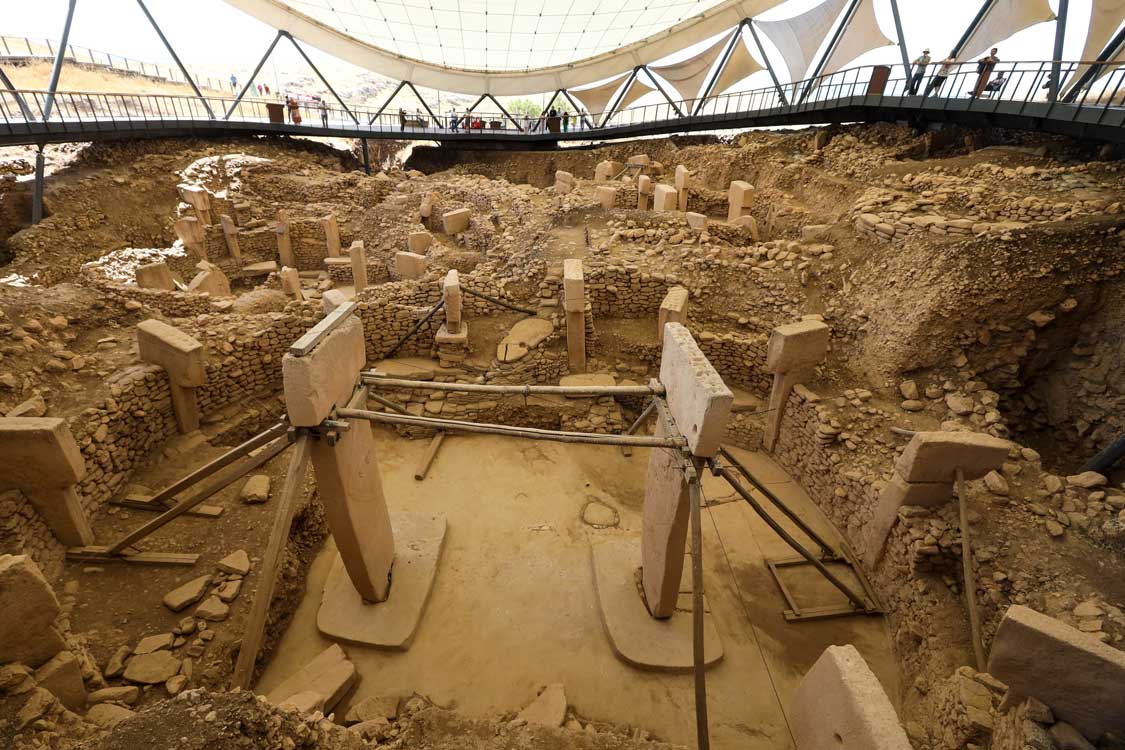
On the far side of the entrance under the dome is building D. This is believed to be the oldest of all of the temples at Gobekli Tepe and has been dated to about 9,500 BCE or 11,500 years ago.
Each of the central pillars of Building D is a massive 18 feet tall and weighs over 15 tons. Like building C, these pillars were mounted on pillars carved from the natural bedrock. The pillars are fairly shallow, and archaeologists have added wooden support structures to help keep these monoliths standing.
Building D offers one of the best examples of something that can be vaguely seen on all of the central pillars, and that is the shape of a human with their hands wrapped around the belly. This draws the conclusion that each of the pillars represents an important figure or religious being that the makers of Gobekli Tepe may have worshipped.
They bear a striking resemblance to Urfa Man, the world’s oldest statue, which dates back to around the same period. It was found in Sanliurfa and is on display at the city’s museum.
Building F
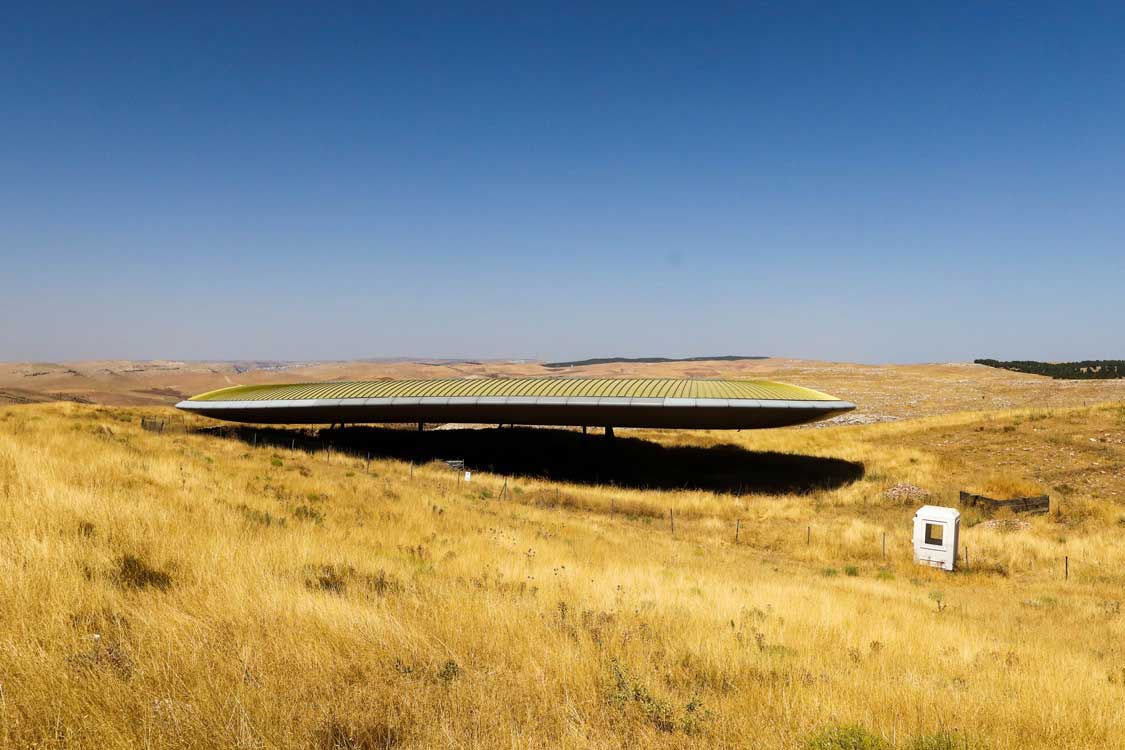
The final stop on our explorations of Gobekli Tepe was Building F, which has been closed to the public for some time. Building F was one of the last buildings at Gobekli Tepe to be built. It dates between 8,500-8,000 BCE.
The stunning thing about this is that it means that this site was in use for more than 1,500 years. In modern times, it would be the equivalent of the Rotunda of Saint George, which we visited in Thessaloniki on our Greek Islands cruise a few weeks prior.
This is a round enclosure like the others beneath the dome. It features eight pillars above a terrazzo floor. The pillars here are much smaller than the ones in older buildings. It really brings into perspective how the effort that went into these temples became less and less over the years until, eventually, the entire site was purposefully buried and forgotten about for 10,000 years.
Best Time To Visit Gobekli Tepe
Gobekli Tepe is a fully established attraction. The museum and ruins of Gobekli Tepe are open every day from 08:30 to 17:30. The final ticket sale and entry time is at 17:00.
What To See Near Gobekli Tepe
Gobekli Tepe is such a fascinating site. While a place like this deserves a lot of time, the truth is that Gobekli Tepe is actually a pretty small archaeological site. The entire visit might take two to three hours to explore at most. In fact, most visitors probably spend less than two hours at Gobekli Tepe.
The good news is that there are plenty of other incredible things to do near Gobekli Tepe that can fill your time with more history and wonder. Here are some of our favorites:
Harran
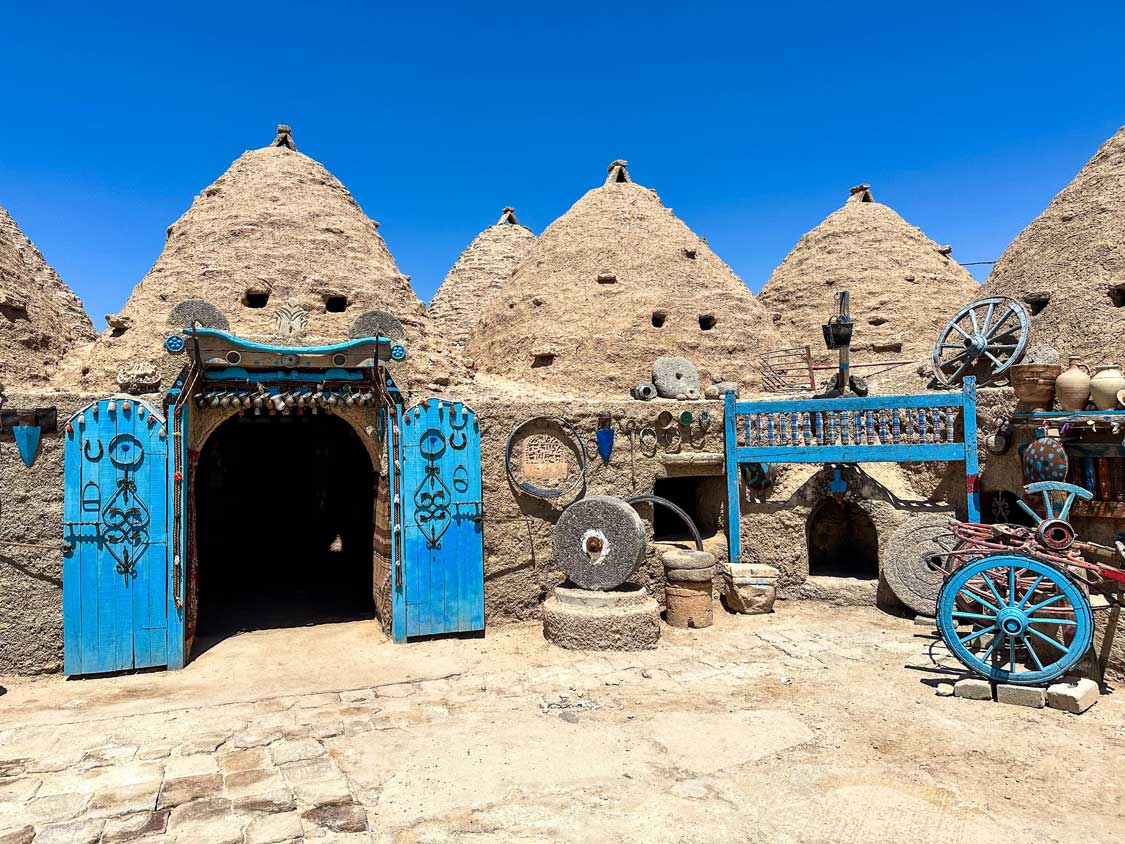
Harran is located about 30 minutes from Gobekli Tepe and is a fascinating destination for history lovers. this ancient city dates back to about 2,500 BCE. The walled city, which lies mostly in ruins now, was home to one of the world’s oldest universities, the medieval Harran University.
Harran has become famous for its unique Beehive Houses. These mud-brick buildings are not found elsewhere in Turkey and are rare in the rest of the world. They’re believed to have been in use since the 7th century BCE. Although the ones present now date only back to the mid-20th century.
Sanliurfa (Urfa)
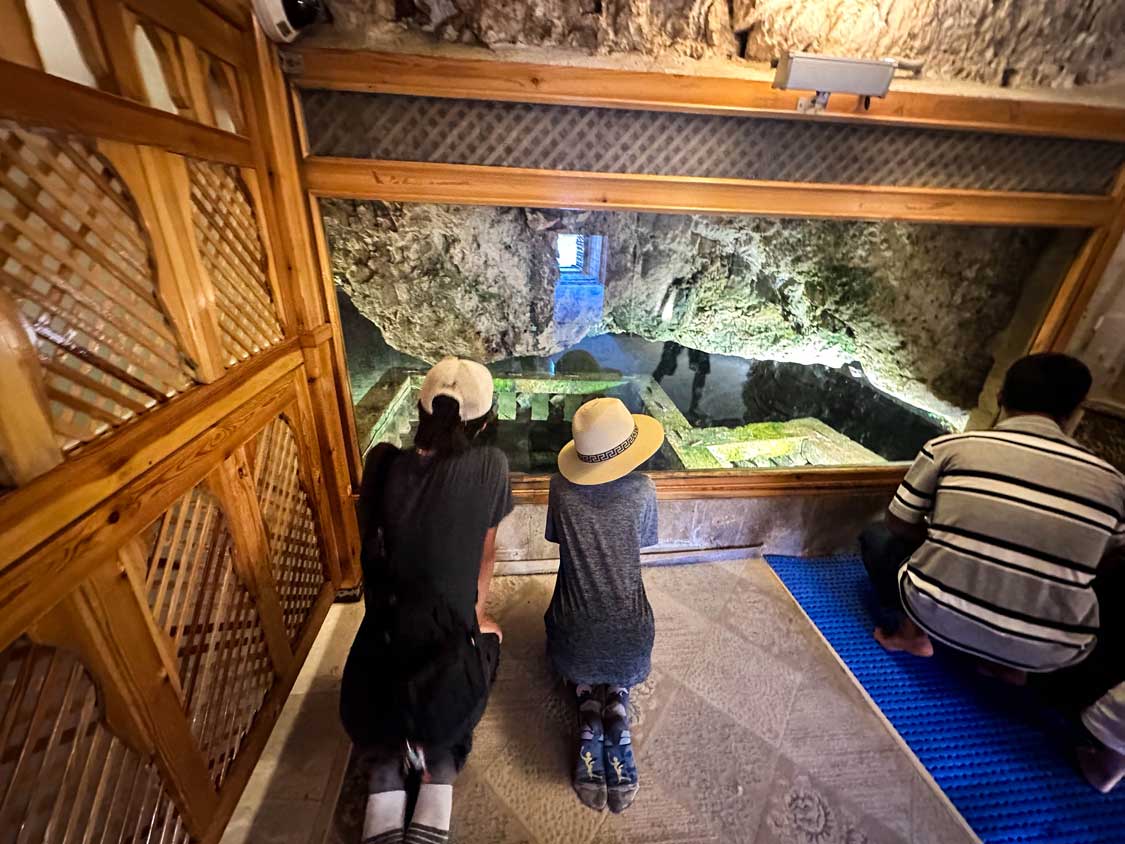
The city of Sanliurfa is the largest city near Gobekli Tepe. This ancient city is one of the most important biblical cities. It’s believed to be where the Prophet Abraham was born and began his teachings. It has become one of the most important pilgrimage cities in the world.
Among the many great places to visit in Sanliurfa are Abraham’s Pond, which he was cast into from a cliff face, and Abraham’s Cave, believed to be his place of birth.
There are many ruins, castles, markets, and archeological sites to explore in Sanliurfa, as well as some excellent museums.
Tips For Family Travel In Turkiye
Family travel in Turkiye, especially in places like Sanliurfa and the Southeast, requires some planning and a little bit of luck. Some areas of this country can be closed due to political unrest, so it’s always a good idea to check out current travel advisories and stay informed of the current travel status.
Check out our Turkiye Family Travel Blog for everything that you need to know about family travel in Turkiye and watch ouf Tips for Family Travel in Turkiye video below to help you plan an unforgettable visit to this mesmerizing and wonderful country.
You’d be doing us a huge favor if you could hit the like and subscribe buttons.
Enjoy Your Time Visiting Gobekli Tepe, Turkiye
If you love to get lost in history, there are few better places where you can do that as thoroughly as Gobekli Tepe, Turkiye. 12,000 years of human construction is enough to cause your brain to perform some mental gymnastics
I hope that these tips for visiting Gobekli Tepe were helpful. If I missed anything, please feel free to drop a comment below, reach out via our contact page, or chat with us on our social media channels.
You can find valuable tips about visiting Turkiye on our Turkiye Family Travel Blog. Or feel free to join our Family Travel Support Group on Facebook. You can connect with more family travelers just like you who love to explore the world.
Wandering Wagars is a participant in the Amazon Services LLC Associates Program, an affiliate advertising program designed to provide a means for sites to earn advertising fees by advertising and linking to amazon.com, amazon.co.uk, amazon.ca. Amazon and the Amazon logo are trademarks of Amazon.com, Inc. or its affiliates
You May Also Like To Read:
.

